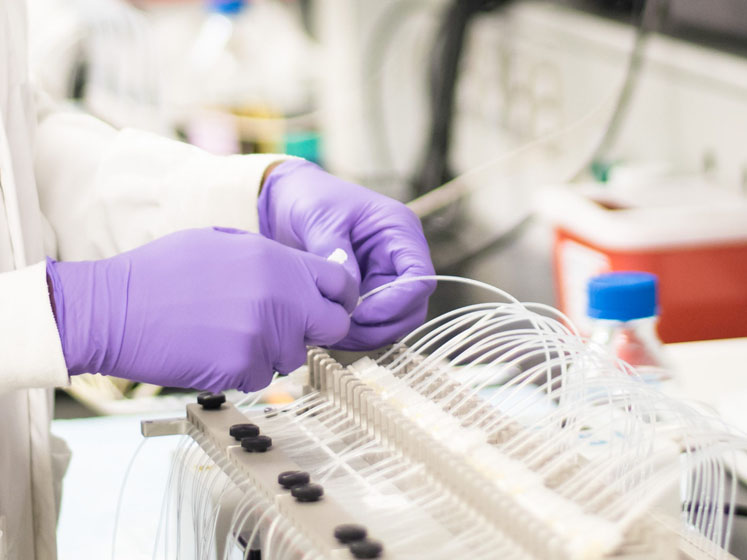Identifying potential scale-up risks during the early stages of semisolid topical formulation development is critical when it comes to minimising delays and shortening timelines — all while keeping costs and energy consumption as low as possible.
Ultimately, this means that a full understanding of the formulation is key. Unlike solid dosage and liquid drug products, which often contain fewer excipients, topical formulations are more complex, particularly those that comprise more than one phase (such as emulsions).
Such complexity makes it extremely important to comprehend product-specific excipients, processing parameters and quality attributes.
In this article, Joseph Holt, Head of Process Development at MedPharm, explores the challenges facing developers when scaling-up processes for semisolid drug product production and highlights the additional difficulties associated with generic drug development and manufacturing.
Holt also provides insights on building a robust process development strategy in terms of characterising the drug product, maintaining relationships with vendors and manufacturing partners, and employing innovation when identifying solutions.

A bridge between formulation development and manufacturing
The processes that can be used to manufacture a drug product are largely influenced by the specific components of that product’s composition. Once a lead formulation has been selected, a phase of process development will take place to identify potential relationships between component materials, processing parameters and the quality attributes of the finished product.
The complexity of semisolid formulations can make scale-up more challenging … and process development more crucial. Although one-size-fits-all approaches exist, they will typically require optimisation to avoid major setbacks. Even a seemingly simple process can usually be made more efficient.
Process development aims to establish optimal operational parameters to ensure that manufacturing complies with regulatory and quality standards by providing a bridge between early stage formulation and downstream production. Process development involves investigating and determining the following:
- suitable parameters (heating and stirring times, for example, and how these could impact costs)
- costs and energy requirements involved (overall time to dispense, manufacture and fill)
- timings and resources required (such as determining when the product can be filled — on the same day or during a few days — and how this might affect materials and headcount).
By establishing a greater understanding of the demands of the project as the product moves towards the commercial market, the risks and challenges that might arise can be proactively identified and quickly overcome.
Performing process development before manufacturing begins, and before any costly toxicology and/or clinical studies take place, can therefore save both time and money in the long-term.
Each project is different and some may require support regarding equipment selection; having strong working relationships with equipment manufacturers allows MedPharm to best support the client and, when needed, recommend plant. With some suppliers, MedPharm can also undertake trials at their site, which facilitates a smooth transfer across the manufacturing scales.
Unique challenges in topical and transdermal process development
The breadth of understanding of the procedures involved in drug product production at every stage means that process development is not without challenges.
These difficulties are further compounded by the fact that topical and transdermal drug product production is associated with unique complexities; factors that impact one another during process development act to push and pull simultaneously. These factors include, but are not limited to, the following:
- temperature
- type of mixing
- type of mixing tool
- warm-up/cool-down time
- stirring time
- homogenisation.
Because the above criteria play such a marked role in the quality, scale-up and reproducibility of the finished drug product, understanding the equipment that could potentially be used is critical.
For instance, when homogenising, there are a multitude of different work heads available that all have different impacts on the product’s micro- and macrostructure, which may affect its final quality.
Understanding how the product behaves using each one not only helps us to narrow down the right tools, but also helps us to understand how the product might behave with different equipment. This is particularly useful as it is not always possible for the sending and receiving sites to have matching apparatus.

Stirring and mixing may seem simple at first, but when you have shear-sensitive products you must consider how the construction of the mixing paddle introduces shear and how this translates across a range of scales and equipment.
When it comes to the excipients used in the formulation, it’s important to evaluate multiple suppliers and as many available options as possible (at both the high and low end of the product specification) to determine what will work best when it comes to quality and scale-up.
Owing to time constraints and following risk evaluation, this is not always done during the early stages of development … but will be required close to commercialisation.
This is increasingly difficult for topical and transdermal products, because of the high number of excipients used.
As it is difficult to predict every change that may be necessary at the commercial scale, generating data about when the product may fail, and understanding the impact certain equipment/excipients may have on the drug product, makes it easier to implement any of those changes when the time comes.
